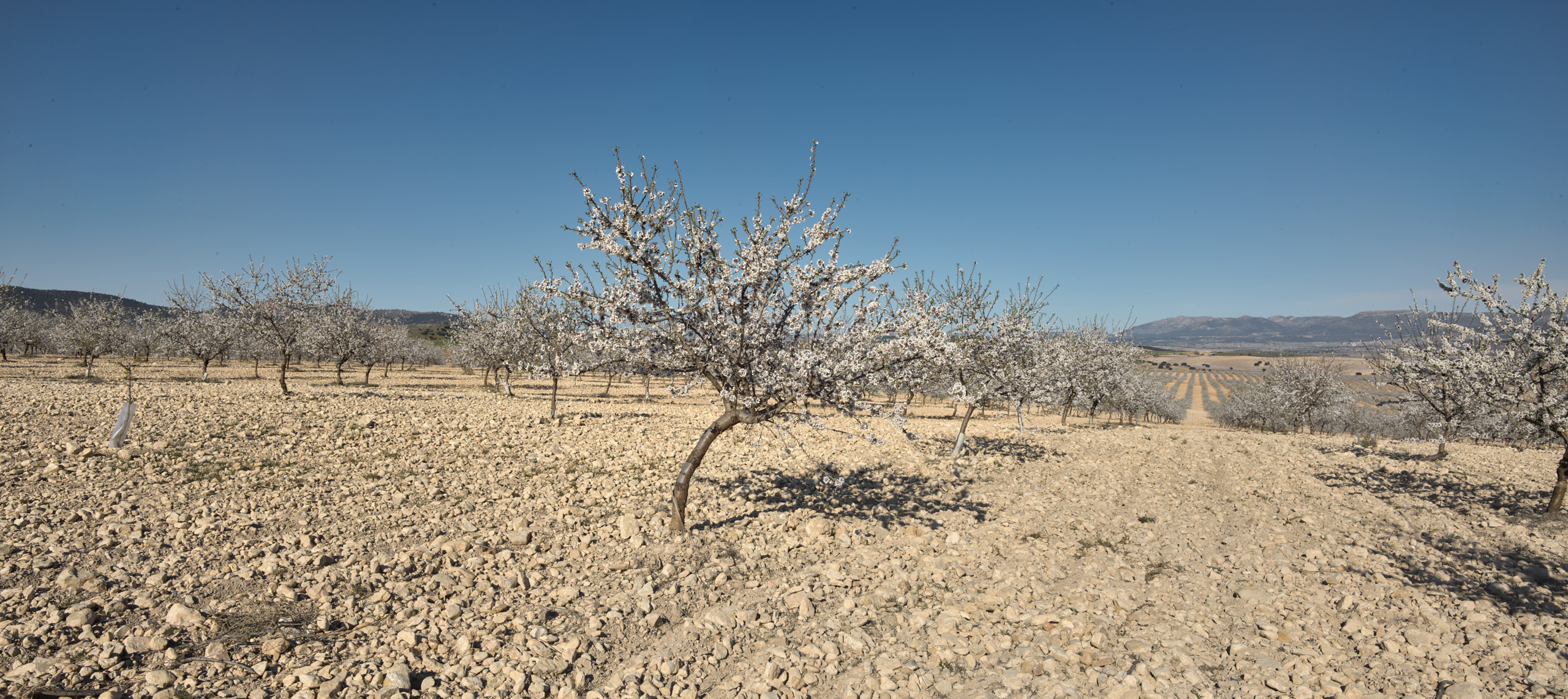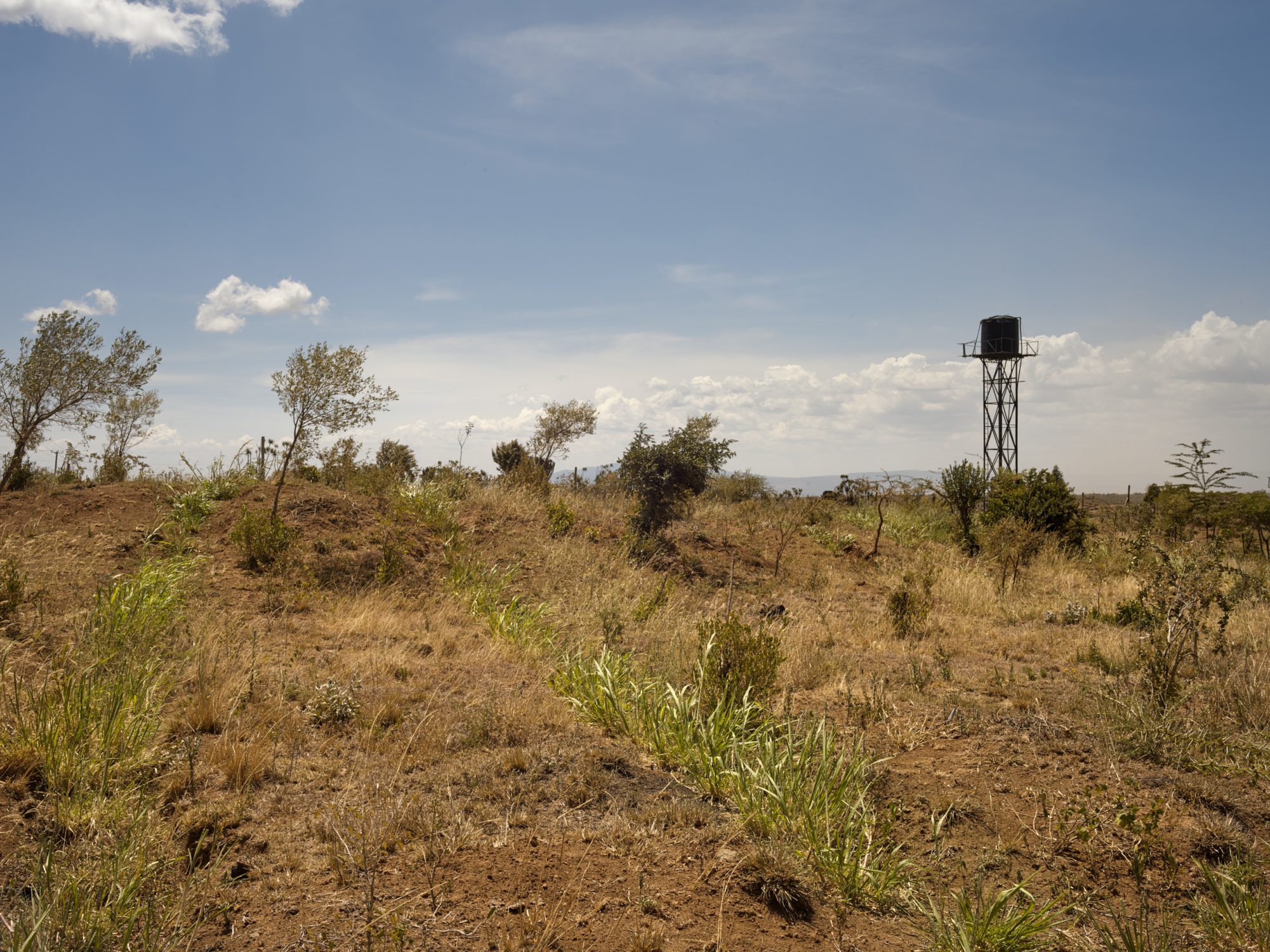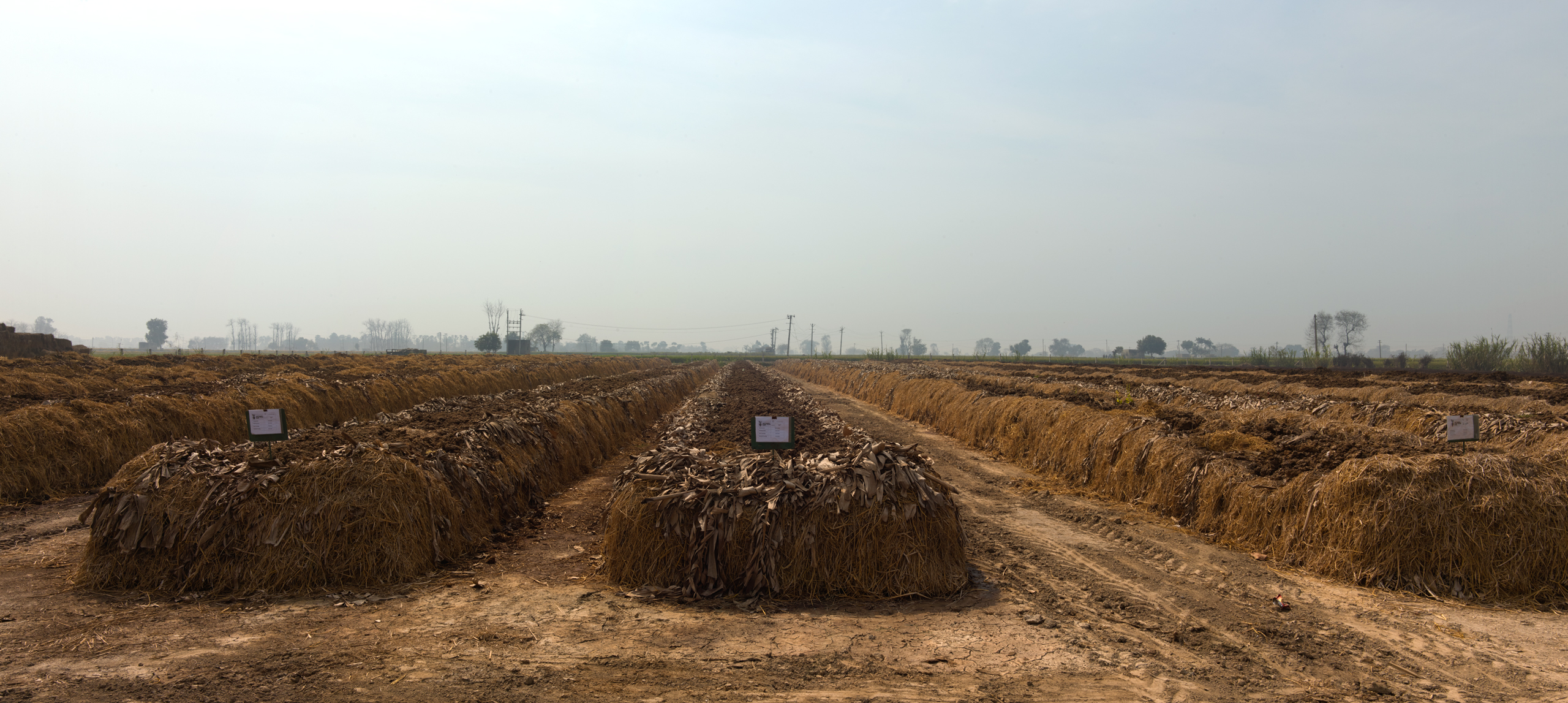
Urban Farms Co
Our story about the ‘Urban farmers’ around the most densely populated cities in India begins with a meeting with Vikash Abraham in the fertility centre some ten kilometres outside the centre of New Delhi. Vikash is chief executive officer at Urban Farms Co. and he started this ‘fertility hub’ four years ago.
Where are we? A twelve-acre stretch of farmland just outside the centre of the metropolis of New Delhi,with mor e than twenty-seven million residents with mouths that need to be fed. Talking about India means talking about dizzying statistics. With only 4% of the world’s water supply and 2.4% of the world’s land surface, India feeds 18% of the world’s population and 15% of the world’s livestock.
India is a great power in every respect. It is now the sixth biggest economy in the world and will soon catch up with Germany and Japan to become the third biggest. It is also a young country; 65% of the population is under the age of thirty-five.
"We had to take responsibility across the food system to ensure that it's a transformation of the system as such."
Vikash Abraham
CEO Urban Farms Co
India is the world’s largest producer of milk, legumes and spices. It has more livestock than any other country in the world, as well as the largest acreage of wheat, rice and cotton. It is the world’s second biggest producer of rice, wheat, cotton, sugarcane, farmed fish, mutton and goat’s meat, fruit, vegetables and tea. It farms around 195 million hectares, of which some 63% is dependent on rainwater (roughly 125 million hectares), while 37% is irrigated (70 million hectares). India also has some 70 million hectares of forest.
Sources
FAO, Food and Agriculture Organization of the United Nations
LNV, Dutch Ministry of Agriculture, Nature and Food Quality
WUR, Wageningen University & Research
Naandi Foundation
Farming’s share of the Indian economy is declining year on year and now adds up to just 15%. This is a consequence of the growing economic importance of India’s industrial and services sectors.
Sources
FAO, Food and Agriculture Organization of the United Nations
LNV, Dutch Ministry of Agriculture, Nature and Food Quality
Hundreds of millions of people, however, amounting to more than half of the population, depend on farming for their income, the vast majority of them living and working in the countryside. They mostly belong to the poorest stratum of people in India.
All kinds of political promises about the doubling of farming incomes, about subsidies and market interventions that would allow the rural population to share in the country’s increasing prosperity, have not been fulfilled up to now.
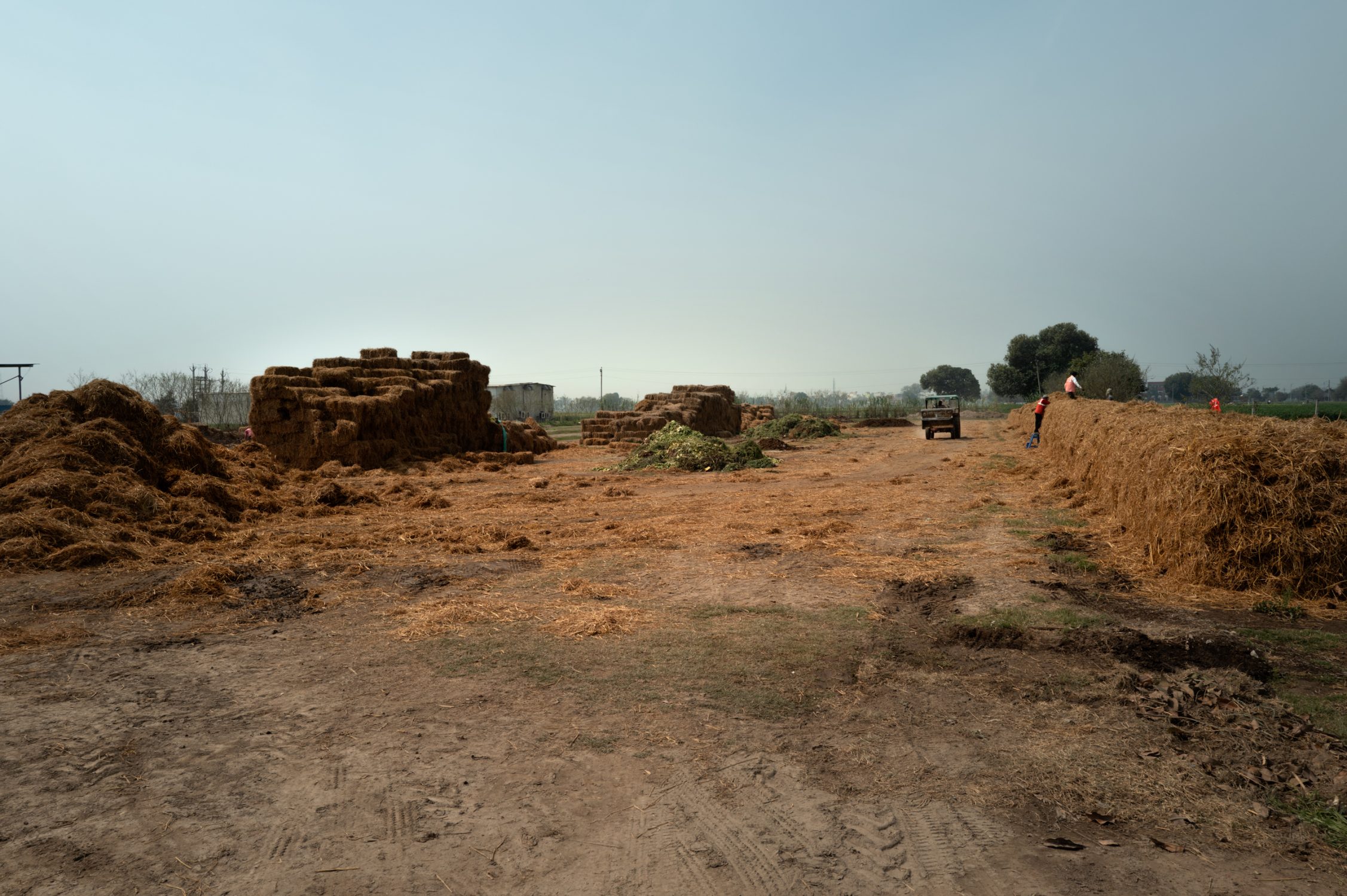
"What we do here is changing the food system into a positive cycle for the farmer and for nature, as well as for the consumer."
Indian agriculture is generally identified with the ‘Green Revolution’ that began in the 1960s. It enabled the country to achieve great progress in domestic food production and made a considerable contribution to advances in related sectors.
It transformed India from a country of food shortages into an export-oriented country with surpluses; 42 countries in Asia and Africa, for example, are currently dependent on India for more than half their rice imports.
It is true to say that before the Green Revolution, all farming in India was entirely organic. The arrival of better crops and new agricultural techniques not only transformed the country from a land of food shortages to a land of surpluses, it opened the door to Big Agro. As a result, much of India’s biodiversity was lost, including many native plant species, and the coming of Big Agro also meant that much of its centuries-old farming knowledge and farming culture disappeared.
Climate change, the excessive use of water, the degradation of soils as a consequence of the intensive use of artificial fertilizer and other chemicals, and poverty are the huge challenges that Indian farming faces.
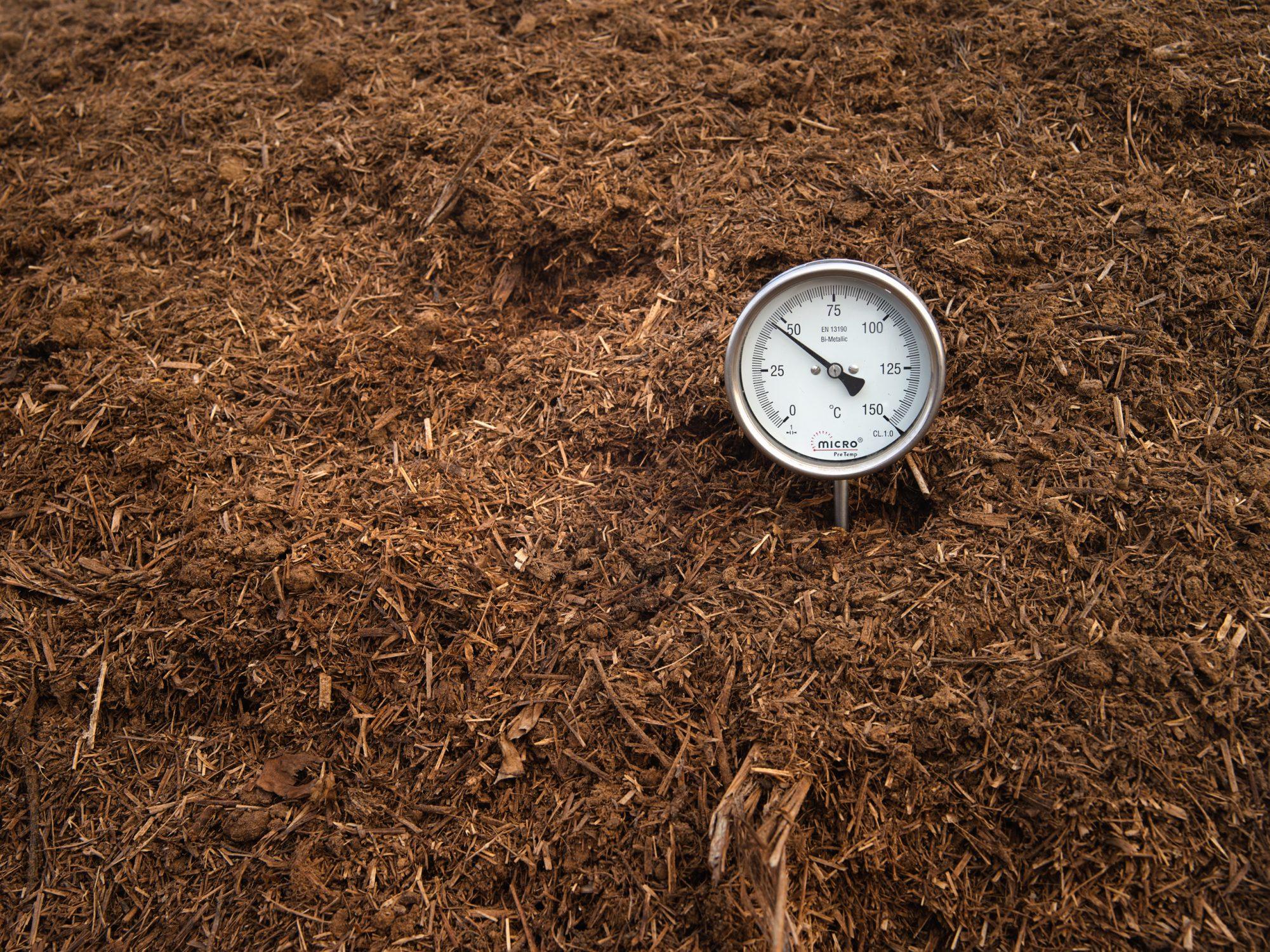
"99% of the raw materials that we use in the hub come from the local region. They are things people consider as waste. One element is the paddy stubble, which is usually burned."
"The burning of stubble creates a lot of pollution all across the north of India. For us, it is a beautiful input because it's extremely rich in carbon, and we see that as something of value."
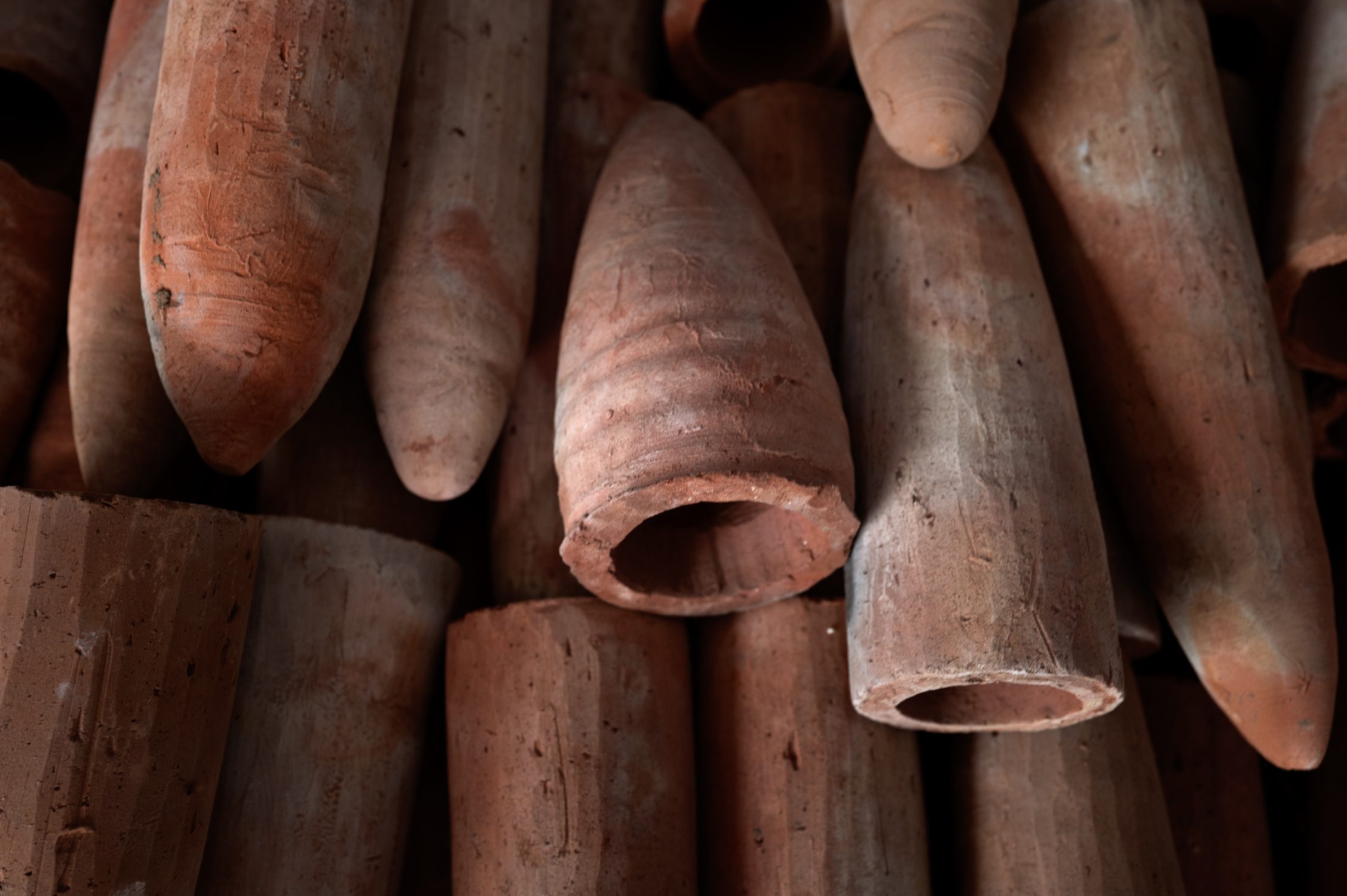
Back to the Future
What Urban Farms and Vikash have in mind with their activities is nothing less than to change the entire food system. The fertility centre where we meet Vikash and his team is one place because of which farmers can make the transition to a regenerative way of growing food.
It is not just the huge scale on which Urban Farms is developing its activities that makes an impression, it is also the combination of ancient farming techniques and farming wisdom with new technologies. Food, health, economic, social and spiritual aspects are all part of this holistic approach.
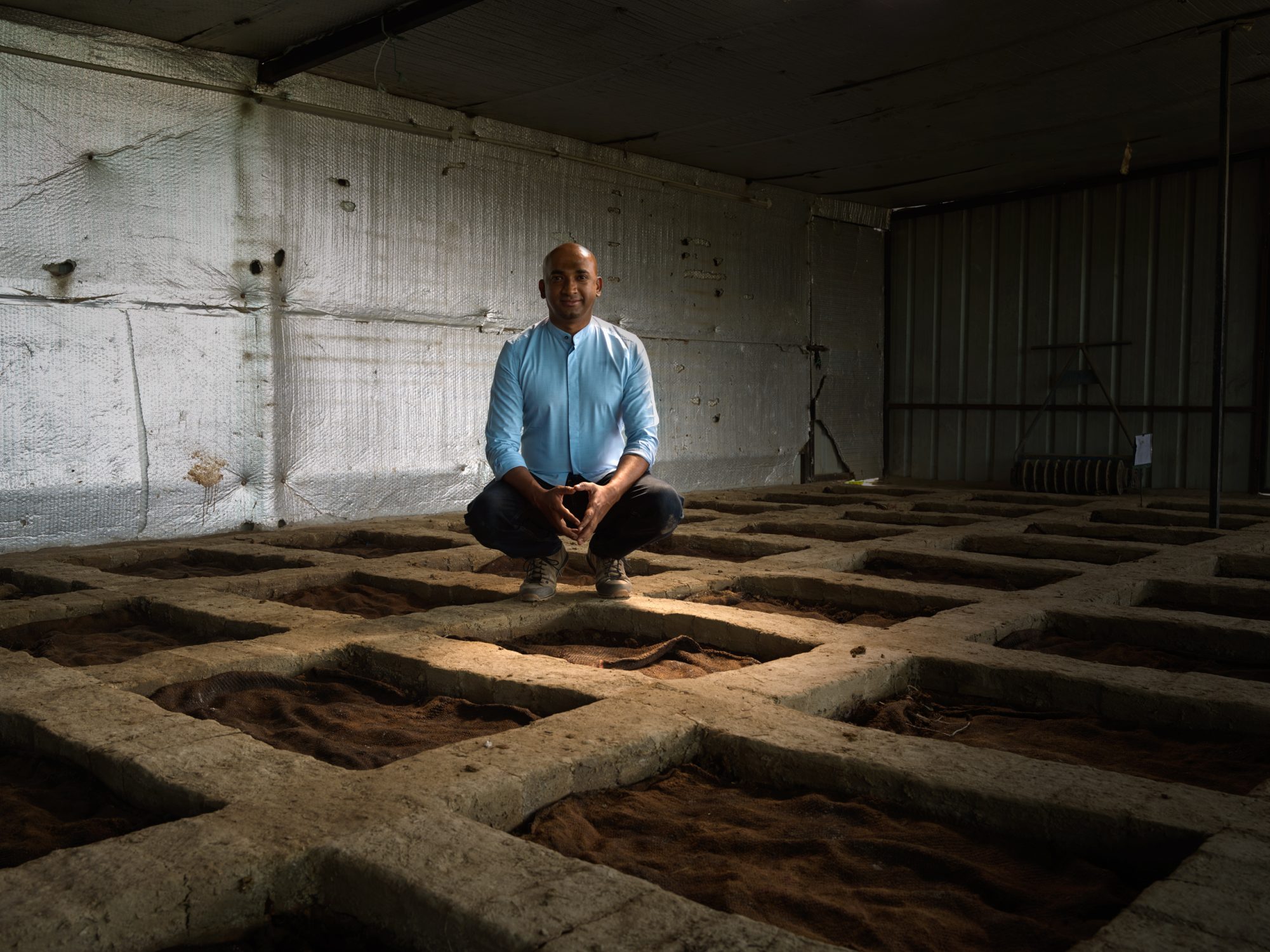
"Plant nutrition comes from soil nutrition. And what is soil nutrition? It is about the symbiotic relationship between the plant, the microbiome and the fungi in the soil."
Vikash Abraham
Vikash leads the Urban Farms Co. project within Naandi.
He is convinced that soil fertility, the environment, farmers and consumers must be in a symbiotic relationship with each other. That alone can lead to a farming model that is profitable, scalable and focused on the health of human beings, plants, soil and the planet.
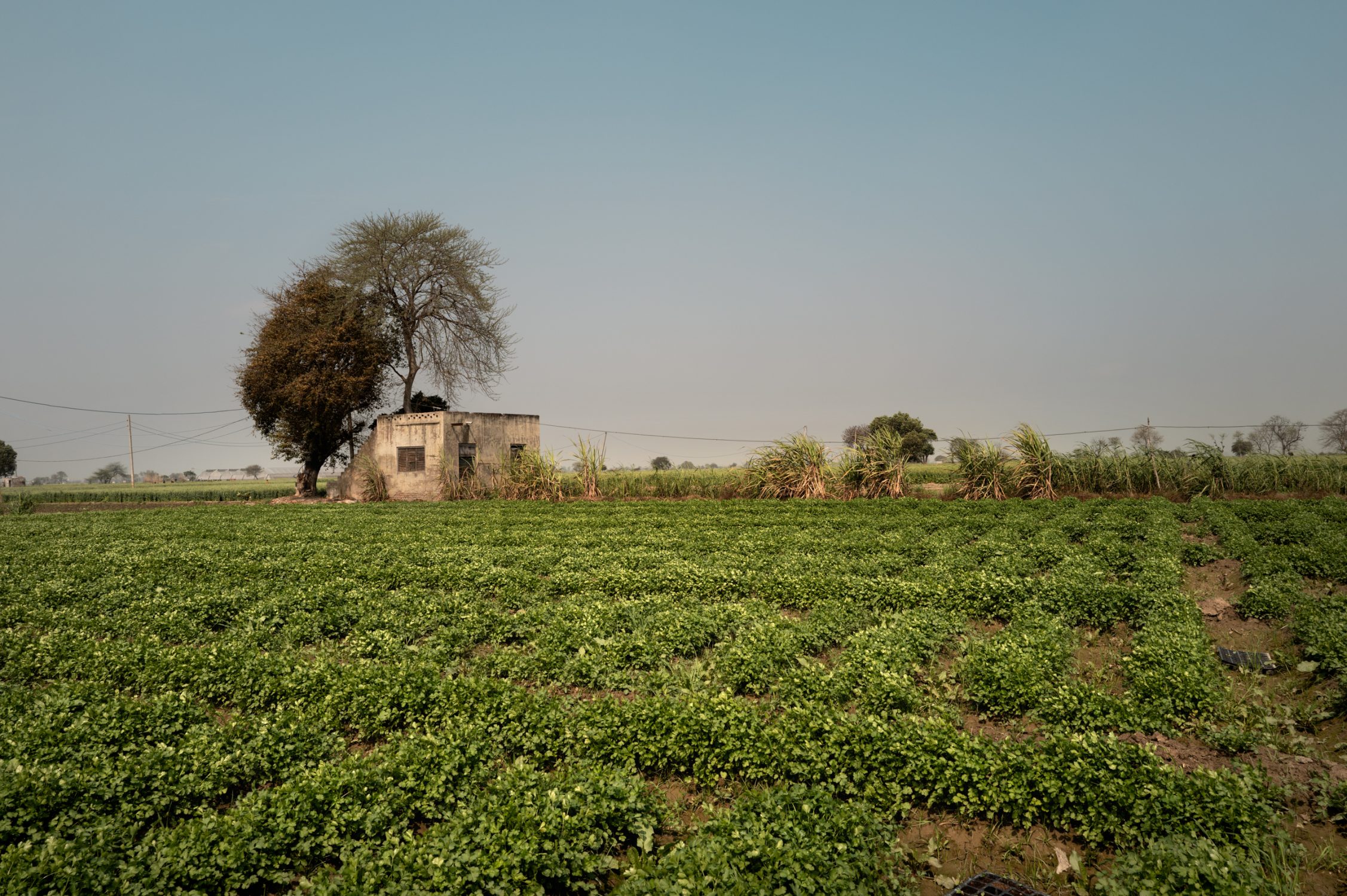
The Urban Farmers of India
The hub and the fertility centre are located in the Palla region, very close to the Yamuna, one of the most important rivers in India.
The region is blessed with fertile soils and plentiful water. It is a green area where traditionally very many small farmers have been based.
The hub lies less than an hour’s drive from New Delhi. In this region, where mostly vegetables are grown, a great deal of pesticide and herbicide treatments have been used over the past 60 years. This has exhausted the soil and damaged health, including that of the farmers, their children and the people who have eaten the food.
The area is characterized by its multiplicity of small farms of less than about two and a half to five Acres. Some sixty varieties of summer and winter vegetables are grown here.
Nowhere does the landscape betray the fact that we are in India. There are no mountains; the land is as flat as our own Netherlands.
Farmers in this area close to Delhi do not live in farmhouses but in homes some distance from the land on which they grow their crops. Huts indicate roughly where that land is. These simple shelters serve to protect people against the almost always scorching sun, and as a place for the farmers, their workers and their families, often including grandparents, to rest or to have lunch.
Practically everyone in the family is involved in working the farm. We photographed four of the farmers and their families in these huts and asked them about the impact of the switch from a type of farming that uses a lot of artificial fertilizers and other chemicals to a nature-inclusive way of producing food.
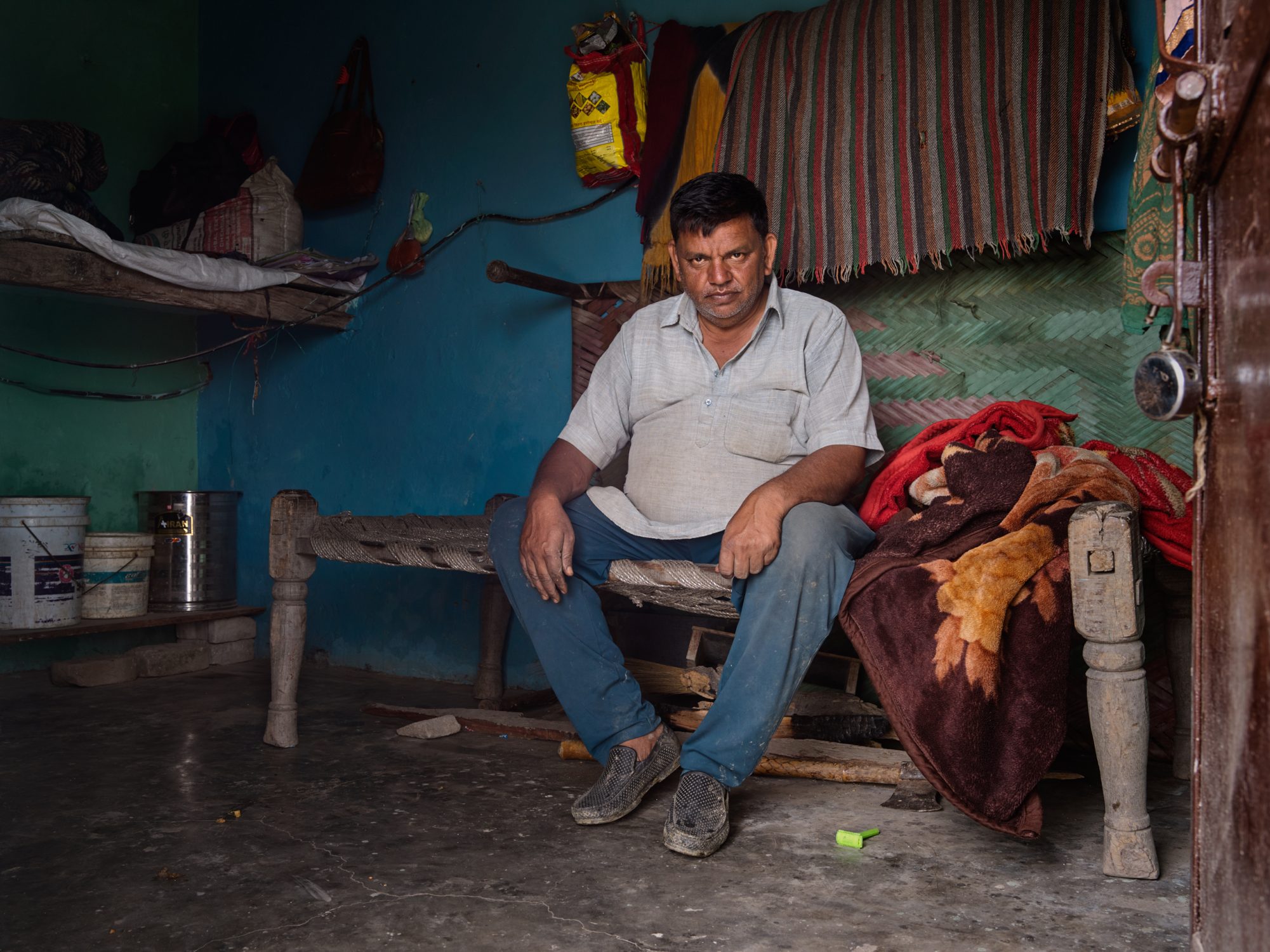
"I initially joined the programme from a commercial perspective. Now I see a transformation in my land and the profitability that comes with it."
Tilak Raj
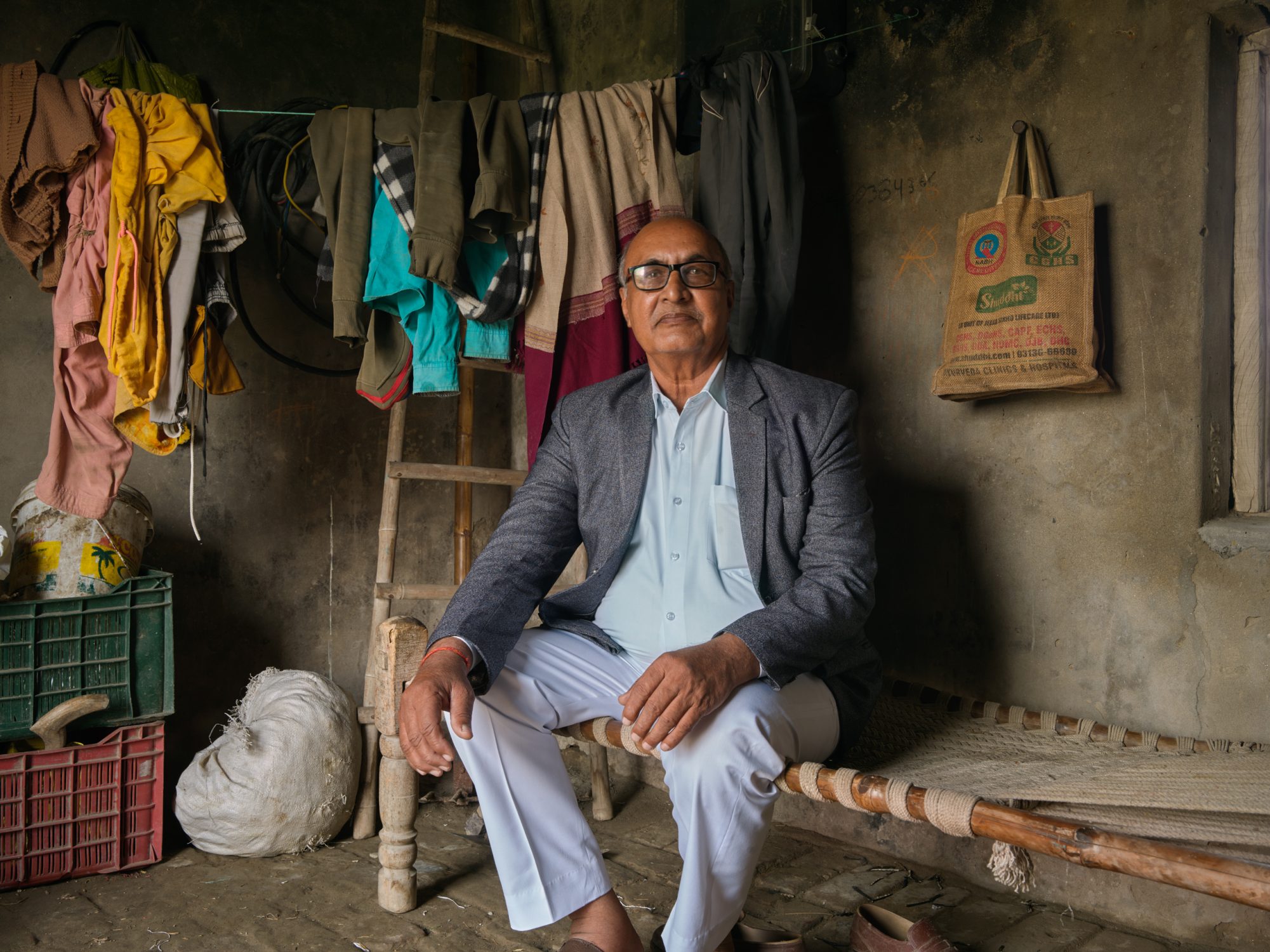
Kiran pal Sang has been farming for 45 years and has seen and experienced everything at one time or another: failed harvests, plagues, too much rain, too little rain. Now he has been farming using the regenerative methods of Urban Farms for four years.
‘This is more like real farming, as in nature, and it can be done without artificial fertilizers and chemicals. My yields are fine; the okra I’m about to harvest is more abundant and beautiful than ever.’
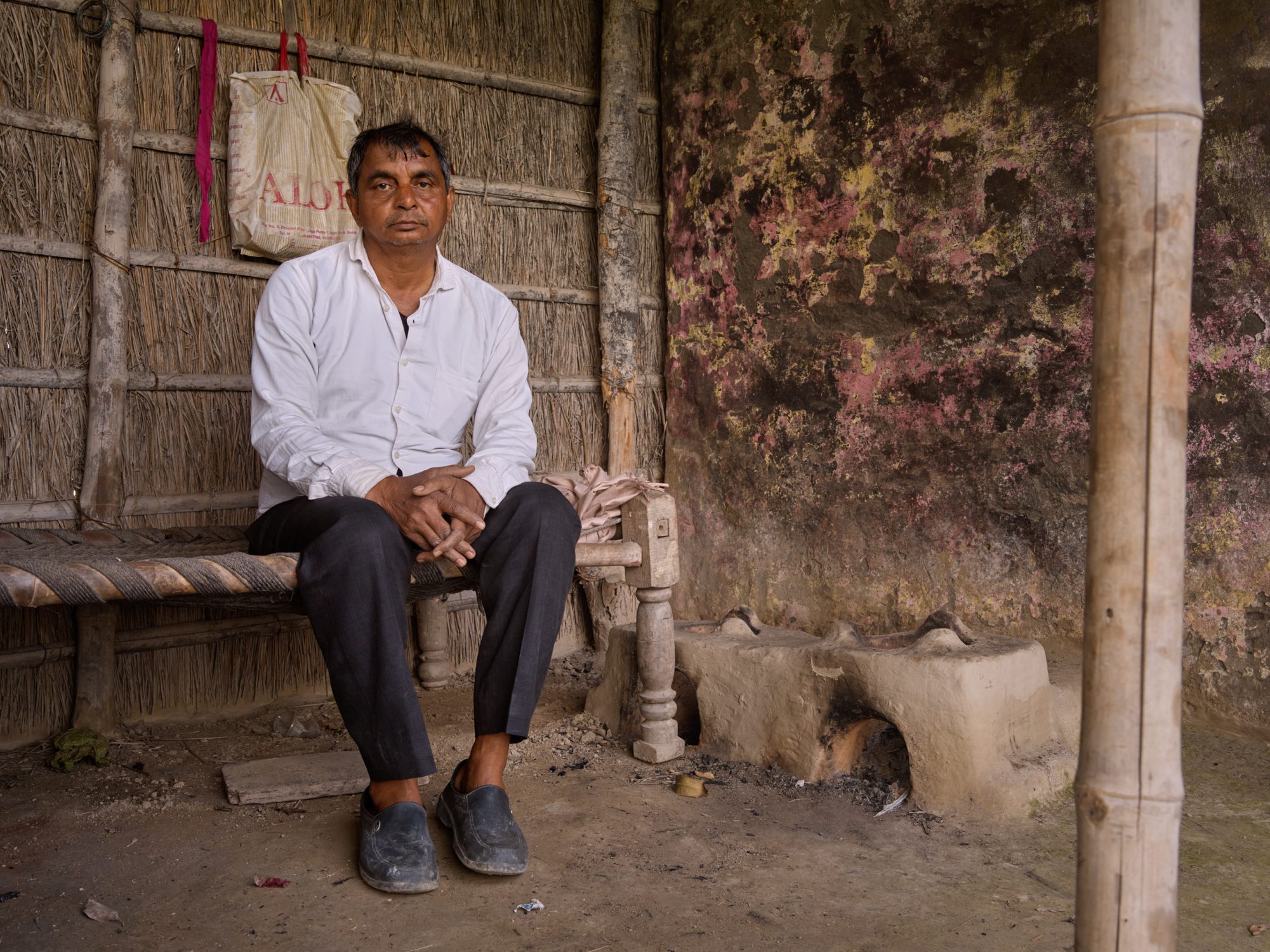
A proud Urban Farmer
Surender has a small farm of four acres, where for more than thirty years he grew sweetcorn in the conventional manner, surrounded by hundreds of other farmers. For more than thirty years he laboured day in, day out to get sufficient yields from his farm. He was solely responsible, and for years he disliked the use of chemicals. But he had no alternative; he knew of no alternative. Joining Urban Farms four years ago and the switch to regenerative methods have brought him far more than merely higher yields.
"For me it means I no longer need to do it alone, that I’m part of a movement, that I contribute something."
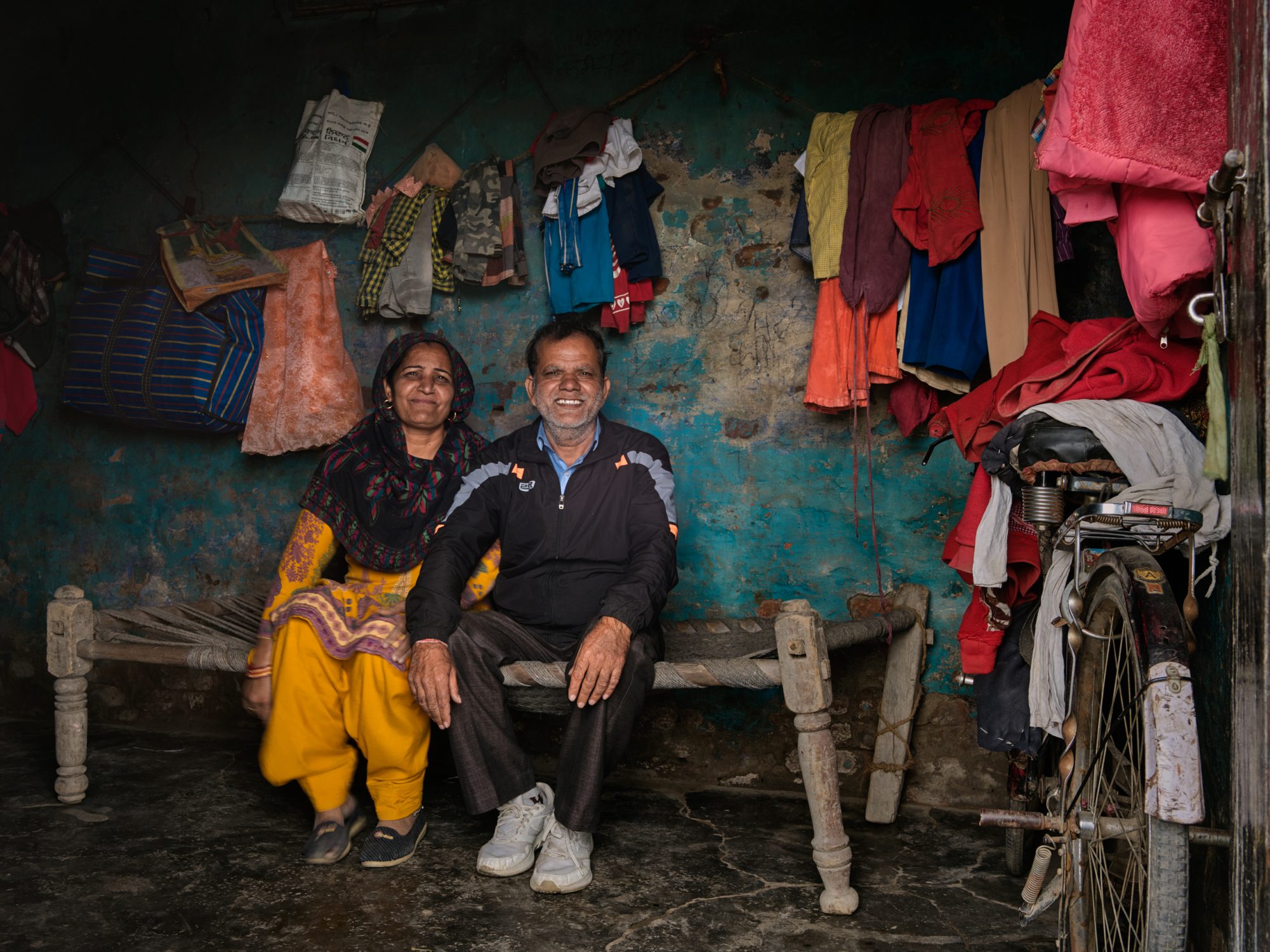
Taste it
Satish and Darshan Kumar grow potatoes and different kinds of vegetables on five acres. In 2019 they were the first in this area to take their lead from Urban Farms Co. in switching to regenerative methods. We meet Satish and Darshan on their land, where the entire family and workers are harvesting the potatoes, digging them up, sorting and packaging them by hand.
It is the hottest part of the day, the sun is directly overhead and the hut is the only place that offers relief from the burning sun. It’s crawling with children of all ages and the mood is cheerful, even joyful. Darshan smiles broadly as she tells us what she thinks of the transition. ‘Look around you and see how the land looks. Look at our potatoes, you should taste them.’ She holds out a bucket to us: ‘Here, taste them, taste them.’
I ask whether I can take a photograph of the two of them and after that she tries again, holding out a bucket of potatoes to us, saying, ‘Taste them, taste them.’
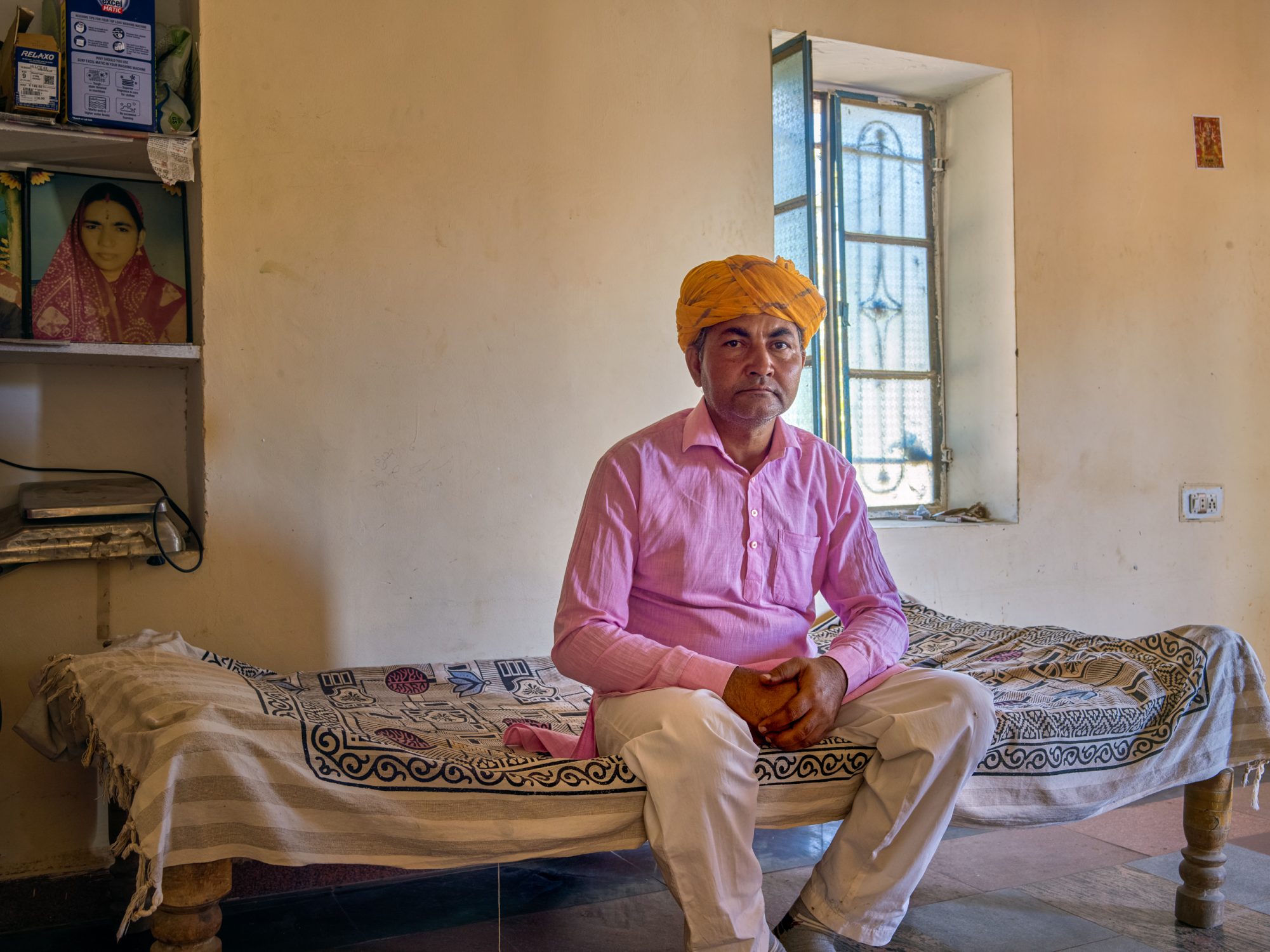
Ramprasad Swami and his family receive us hospitably with flowers and rituals in the house adjoining the land where they grow red beetroot and radish on a number of fields. It was a year and a half ago that he joined up with Urban Farms Co. What induced him to switch and what did it bring him? We ask this via our translator, who tells us, ‘He can’t explain it; he wants to show you something.’ We follow him to the land behind the house, where the beetroot is ready for harvest.
Ramprasad Swami crouches down and pulls a red beetroot out of the ground. Waving it in the air, he says, ‘Look at that root, at the length of it. Look at those root hairs too. This is a healthy beetroot and it’s been given to me by this healthy ground and I’m grateful for that.’
The farm is in a peri-urban area of Rajasthan where Urban Farms Co has another of its hubs. Here too, on Ramprasad Swami’s land, there is nothing in the landscape to indicate that we are in India; here too there are no mountains but instead a landscape we would expect to find in our own country. Rajasthan is one of the largest states in India, as big as Italy with roughly the same population of almost 70 million.
Anyone talking about the urban farmers of this part of India is talking about millions of farms, about families and their daily struggles to survive.
Perhaps this is partly due to the name Urban Farms Co., but you tend to think of little bits of land in and around cities where agriculture is pursued on a limited scale, just enough to supply one restaurant, or on a flat roof somewhere on top of an empty warehouse in New York: praiseworthy initiatives but useless on the scale of a country like India.
In the peri-urban areas of India where Urban Farms Co. has its hubs, tens of millions of people need to be fed and hundreds of thousands of farmers and their families are building a future.
We hadn’t understood much of what he said, but we had got the gist and our translator told us we were indeed very close. Ramprasad Swami wanted to show us the evidence. We must taste it raw! He got out his knife and cut a small piece of beetroot for each of us. We sat there in the burning sun in the beet field eating red beetroot: the proof of the pudding is in the eating.
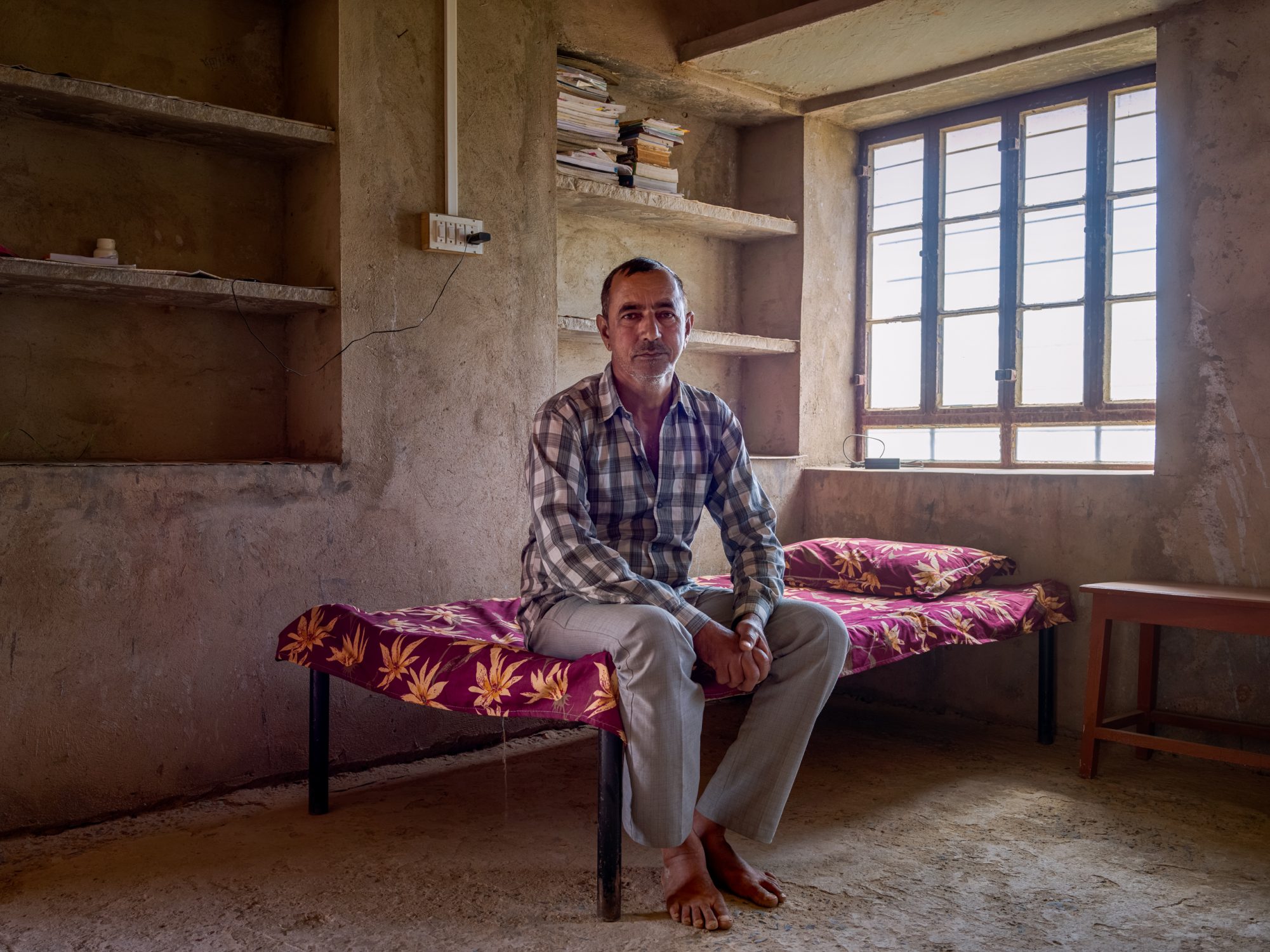
"Above all, farmers eat their own produce; they know the difference in taste and besides, it is much healthier. That’s why they continue with the programme, from an inner conversion or an inner change rather than just a market-driven approach."
Ramkumar Boran
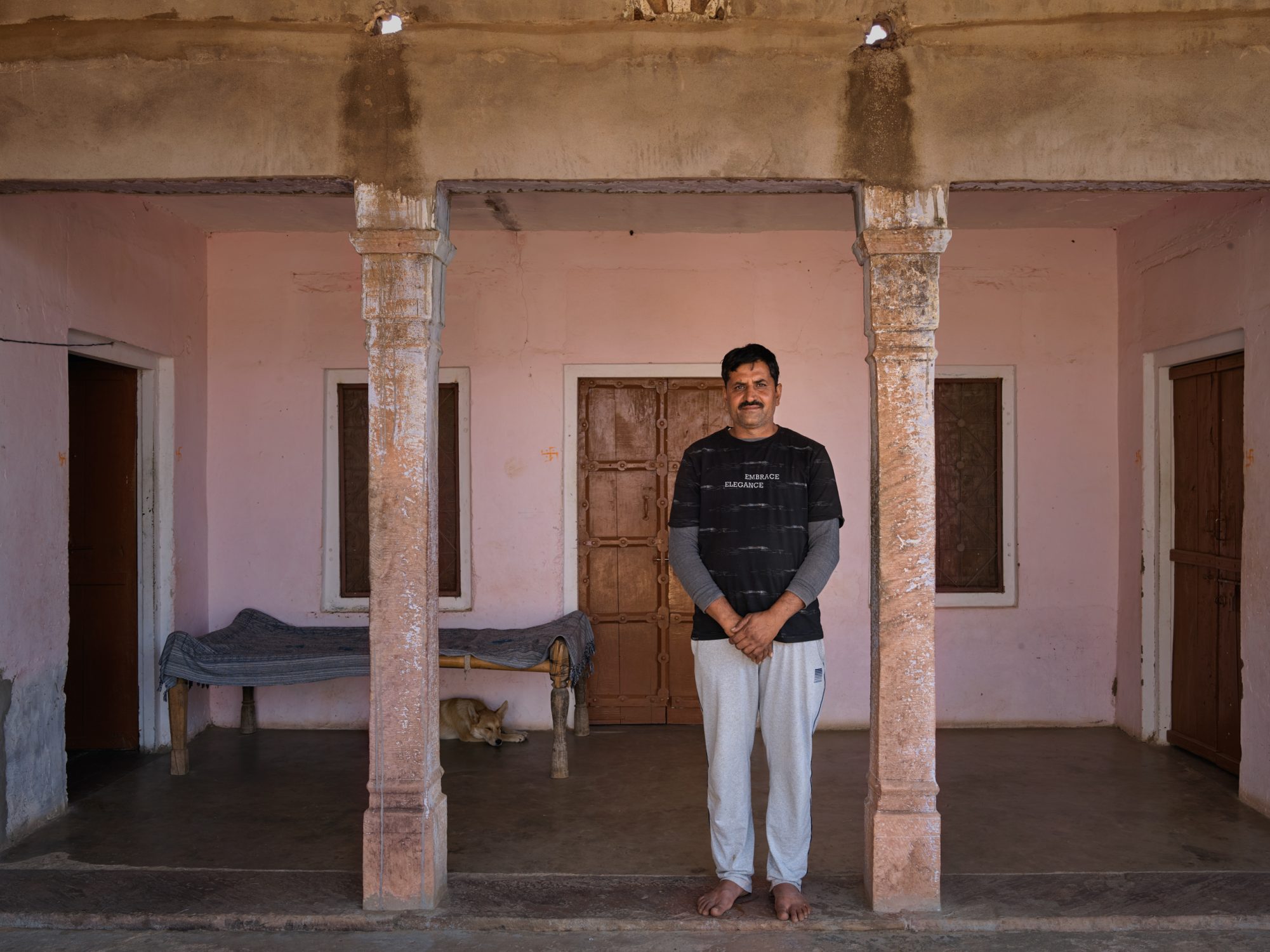
"It’s healthier even for my economy."
Vijay Kumar
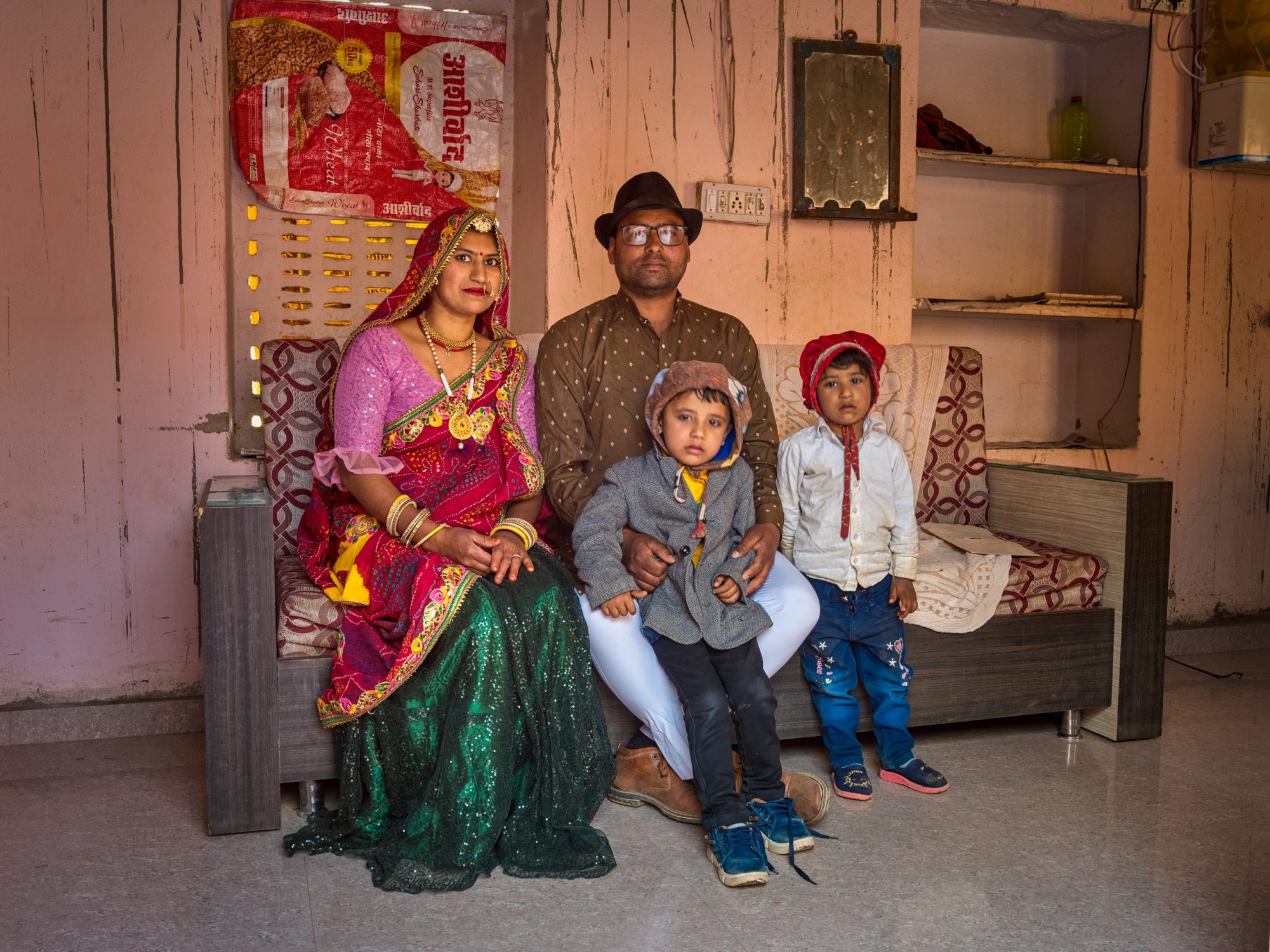
Ashok Saini receives us at the gate, the entrance to the farm. He introduces us to his large family, his wife, his children, his grandparents, his sister and several others.
Ashok is delighted to see us because we are accompanied by three people from Urban Farm and he wants to take them to a part of the land where he has built a greenhouse with a government subsidy and is growing organic cucumbers in the ground inside.
‘Now that he’s got these gentlemen here, he wants them to evaluate the growing process in his greenhouse.’
Ashok is an enterprising farmer, the fifth generation in his family. A proud farmer, too, proud of the way he is combining the ancient farming knowledge of his forebears with new techniques. The repellent he uses for his plants is made according to an old family recipe. Ashok is looking forward to a bright future. He believes in this sustainable way of growing food and he’s happy to be photographed, but only if his wife Maya and their children Naitik and Yakshita can be in the picture too.
"They’ll have to take it over from me one day and this kind of farming has a future, I’m firmly convinced of that."
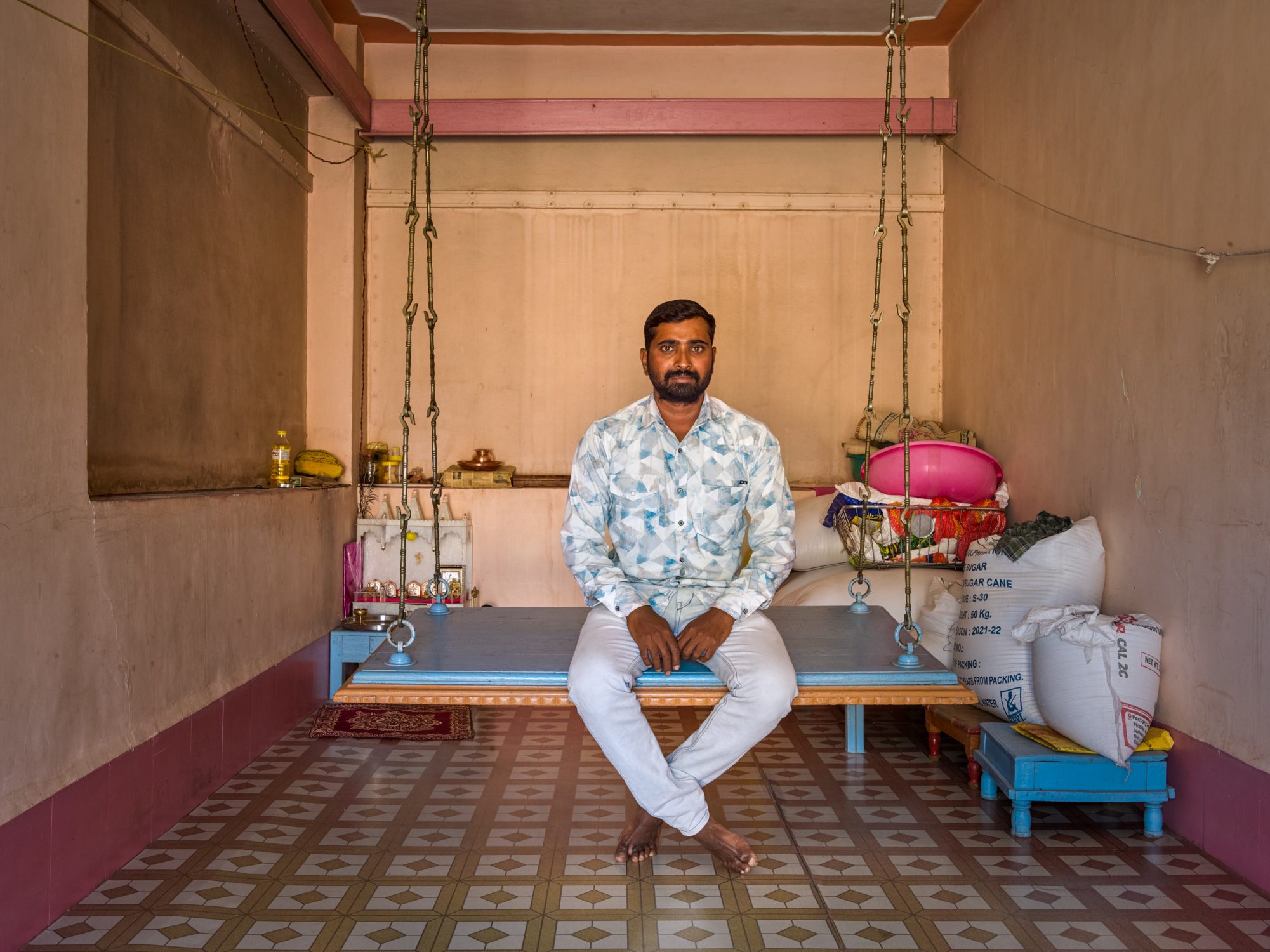
We travel to Narayangaon, where Urban Farms Co. has a third hub, which serves the 140 farmers here who have made the transition to the regenerative agricultural methods it recommends. Narayangaon is in the Pune district of the state of Maharashtra. Pune is the largest city in the state after Mumbai and an important place in terms of economic and industrial growth.
Rahaul Bhor is one of the 140 Urban Farms Co. farmers. Just six months ago he took that step on part of his ten acres and he has faith in it. For Rahaul it’s a process; it feels as if he’s in transition to something new, something good.
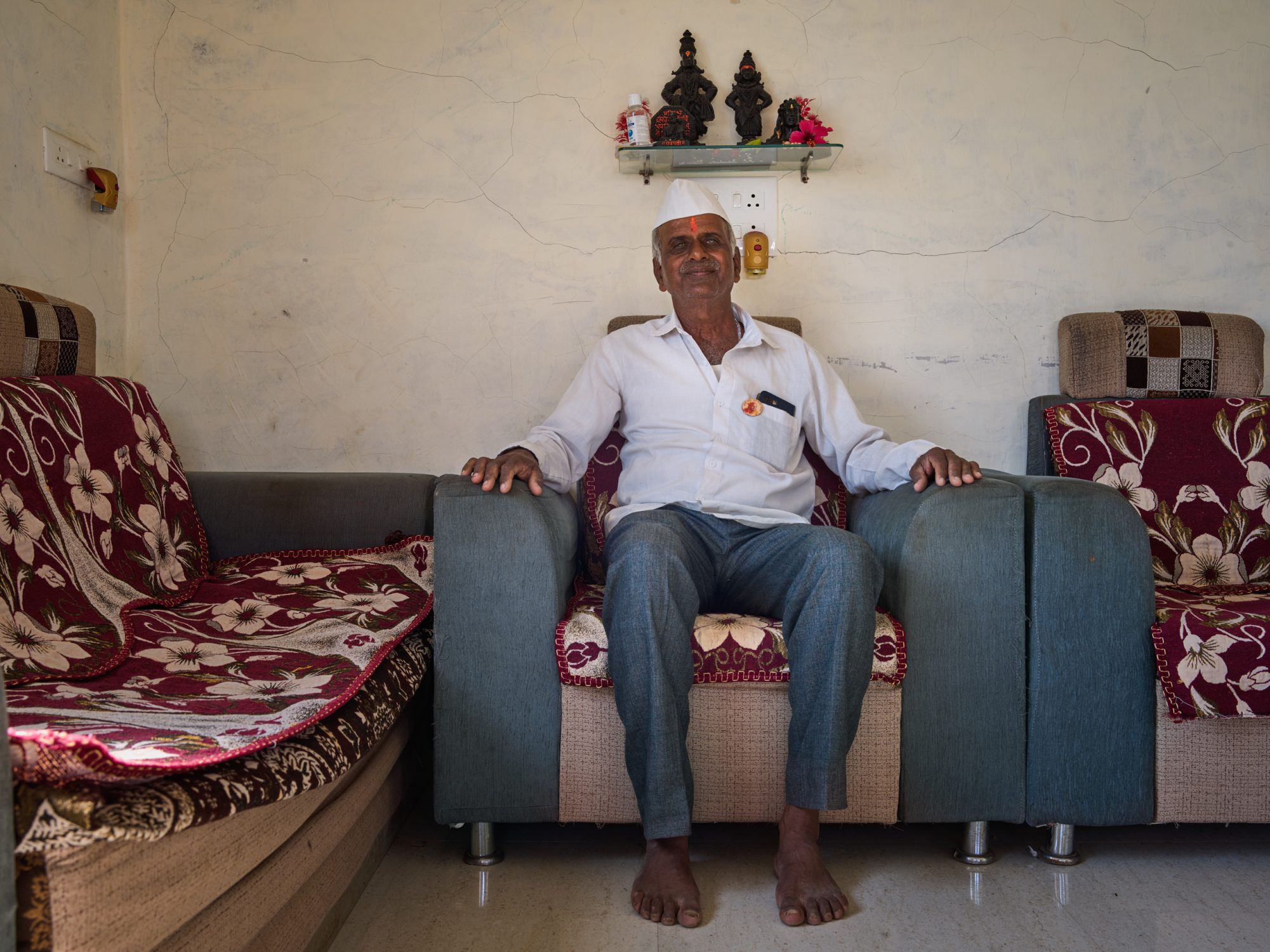
Mahashivaratri
We meet Akshay Sarvade on Mahashivaratri, the most important Hindu festival in honour of the god Shiva. The festival is celebrated in the Hindu month of Magha or Phalguna (February/March) on the thirteenth or fourteenth day after the full moon. In the living room of the house, a few hundred metres from where Akshay has his land and grows tomatoes in the open ground, an altar has been set up in honour of Shiva.
Vandana Shiva is an environmental activist who is working to create a world where humanity and nature can coexist in harmony.
In 1991, Vandana Shiva created one of India’s first community seed banks. Now, with over 150 local agricultural centres across 22 states storing and cultivating native crop species, Shiva is regarded as ‘The Gandhi of Grain’.
Born in Dehradun, Shiva grew up surrounded by nature near the Himalayan foothills. Her mother was a farmer, passionate about the outdoors, and her father was a conservationist and curator of the local forest.
Akshay is not only a spiritual person, he is a pragmatic farmer who sees that the switch from conventional to nature-inclusive farming has brought him higher yields and also made him more free, relieved him, maybe even made him happier. The god Shiva is therefore not his god but his spiritual leader.
Hinduism has many gods, as many as there are hairs on a cow. No, his real goddess and heroine is Vandana Shiva. For Akshay the example is set by ‘The Gandhi of Grain’, the world-famous environmental activist.
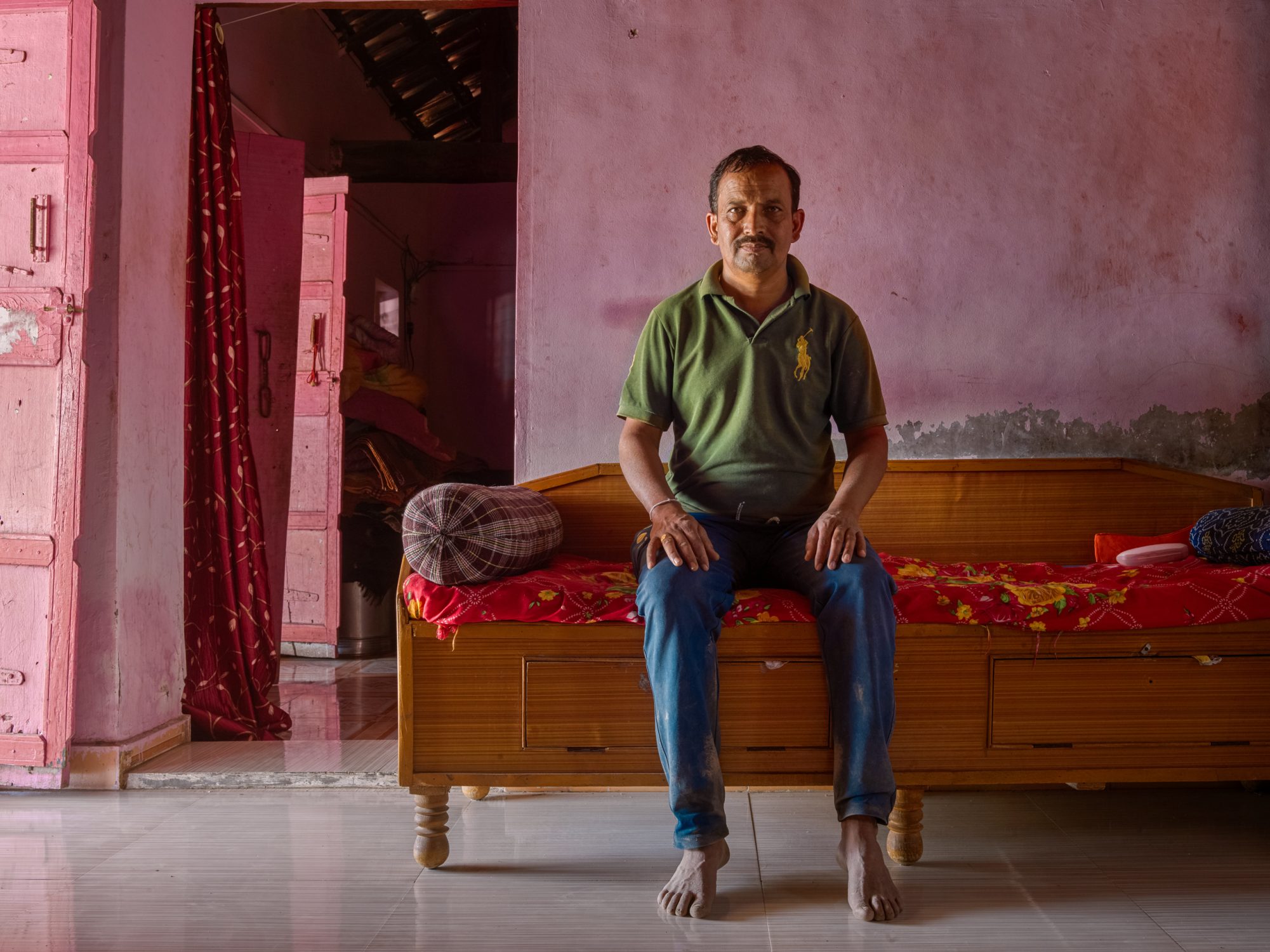
Anil Baban Wagh has only a little time for us. The cauliflower harvest is fully underway and in half an hour from now the truck with some thousand cauliflowers needs to leave for the Urban Farm distribution centre, from where it will set off tonight, arriving early morning to the Mumbai consumer.
His father had a 20-acre farm which was divided up between four brothers. Anil Baban Wagh worked for a long time in the transport company that his father ran along with the farm. It made him unhappy, every single day. Anil didn’t start farming until his children had finished school and he dared to take that financial step. He now farms five acres. He is now happy. Every single day.
He is fascinated by biology, the insects, the soil. ‘If you care for the earth well, the earth will care well for you.’
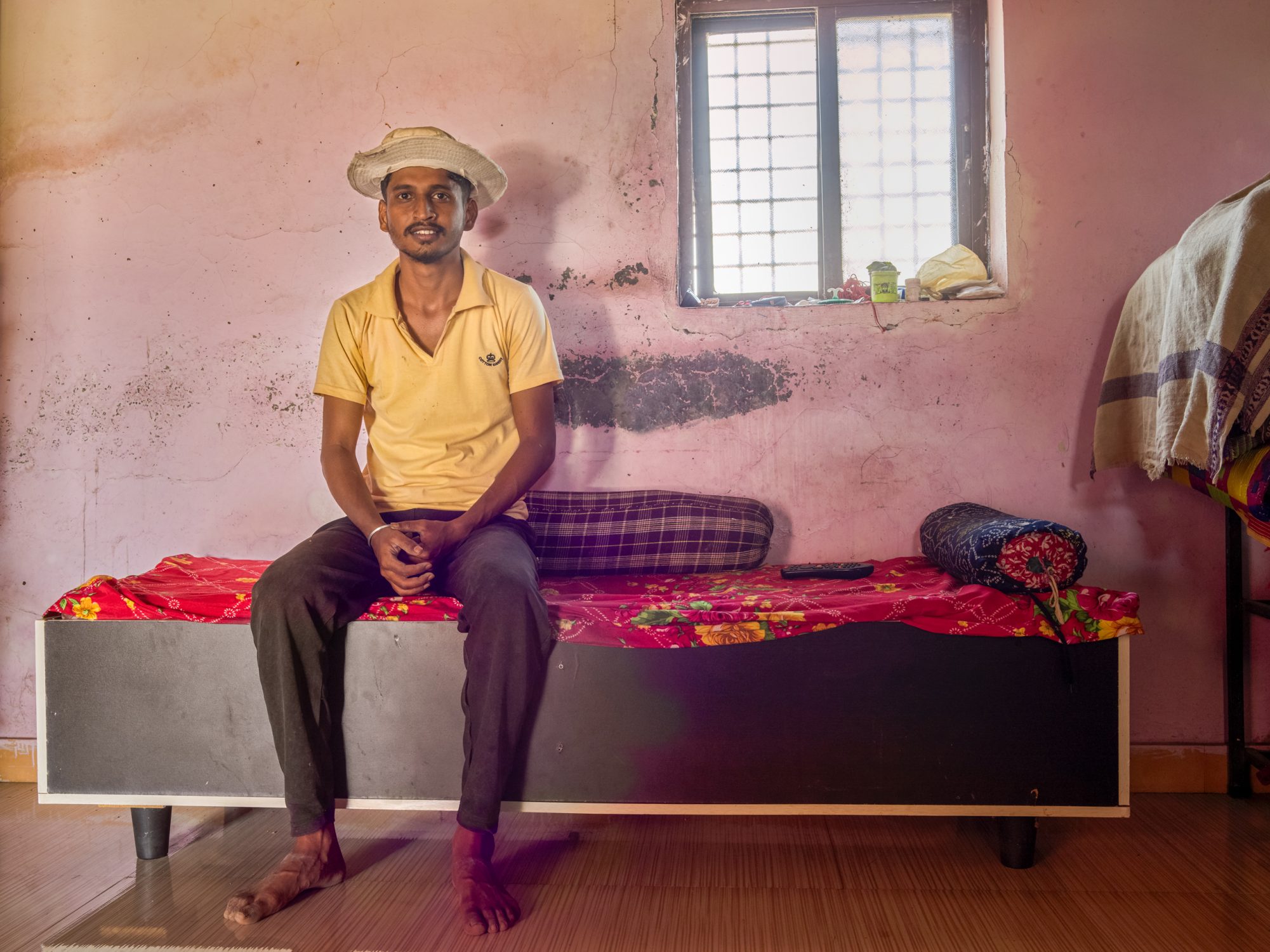
Deepak, Anil Baban Wagh’s son, has a job in the city but has caught the bug from his father. He is investigating what he and his father can contribute to such a necessary agricultural transition. Deepak and his friends are very conscious of the need to feed everyone without exhausting the earth. ‘Making a contribution to that is the most beautiful thing you can do; my future isn’t in the city but here on this farm.’
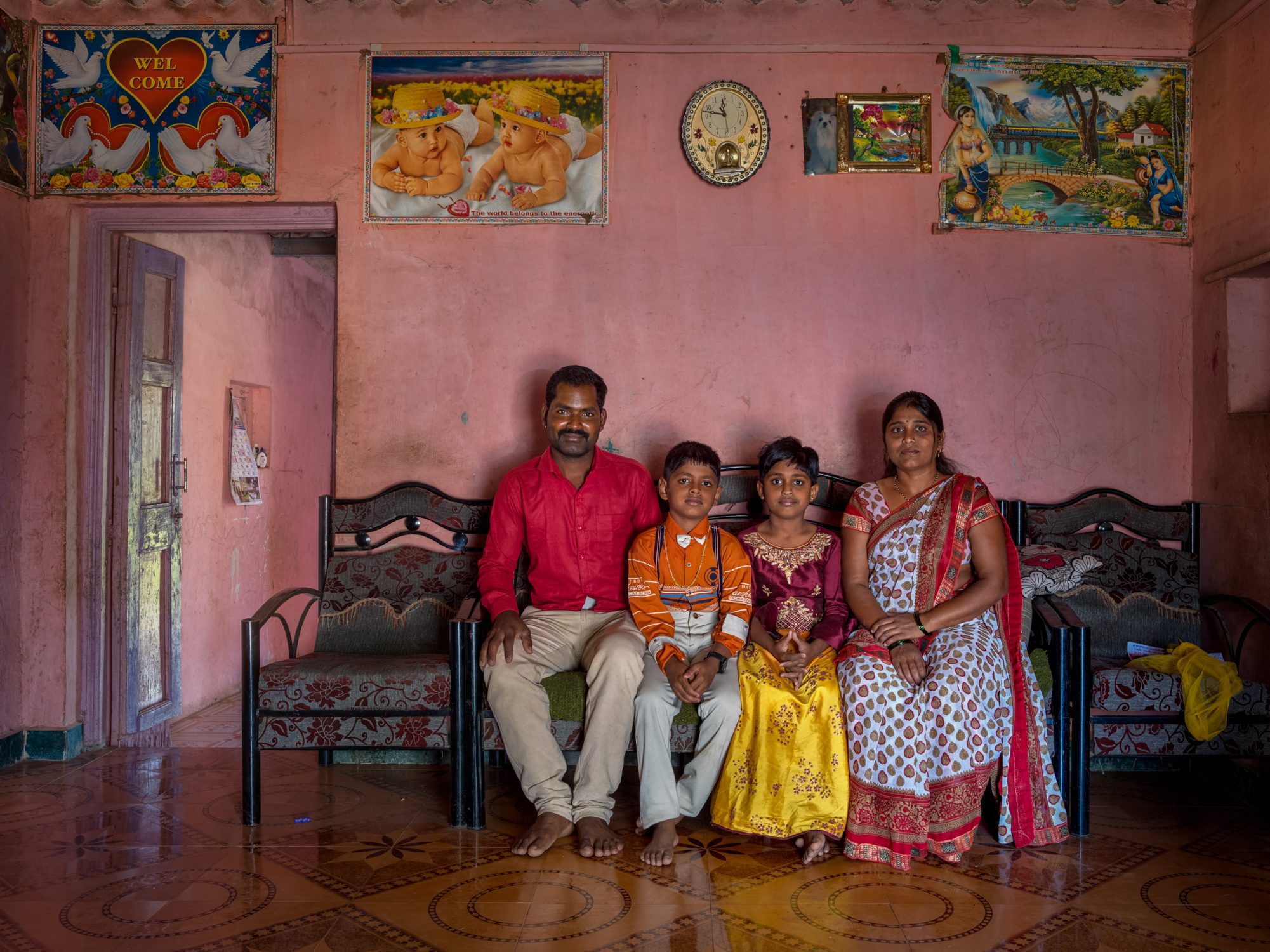
We meet Nilesh Shankar Khoksale at the hottest time of day on one of the hottest days so far. A lean-to roof on his land where he grows his tomatoes offers a little shade.
Much of what we want to know and what Nilesh tries to tell us is ‘lost in translation’.
The most important thing he wants to get over to us is, ‘I’m a proud man and I grow healthy food and earn enough to send my children to the international school. Whether they want to take over here or move to the city to study is their choice. At least they have that choice, because I’ll leave them a piece of healthy land. If I’d carried on using conventional methods, they would soon have had no choice at all.’
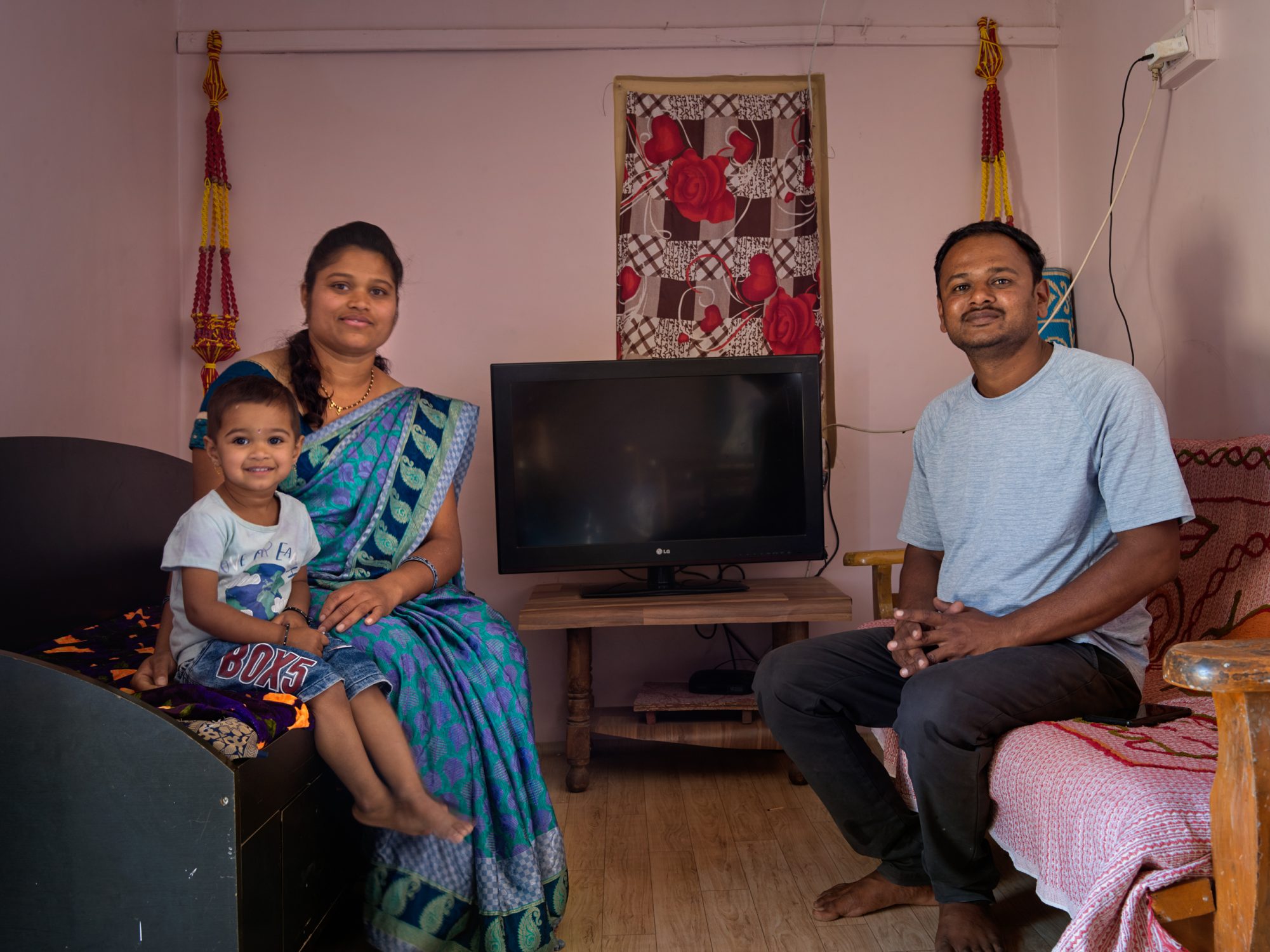
Family farms produce more than 80% of the world's food in terms of value, which confirms the central importance of family farming to global food security both today and for future generations.
Family Rahul Bochare
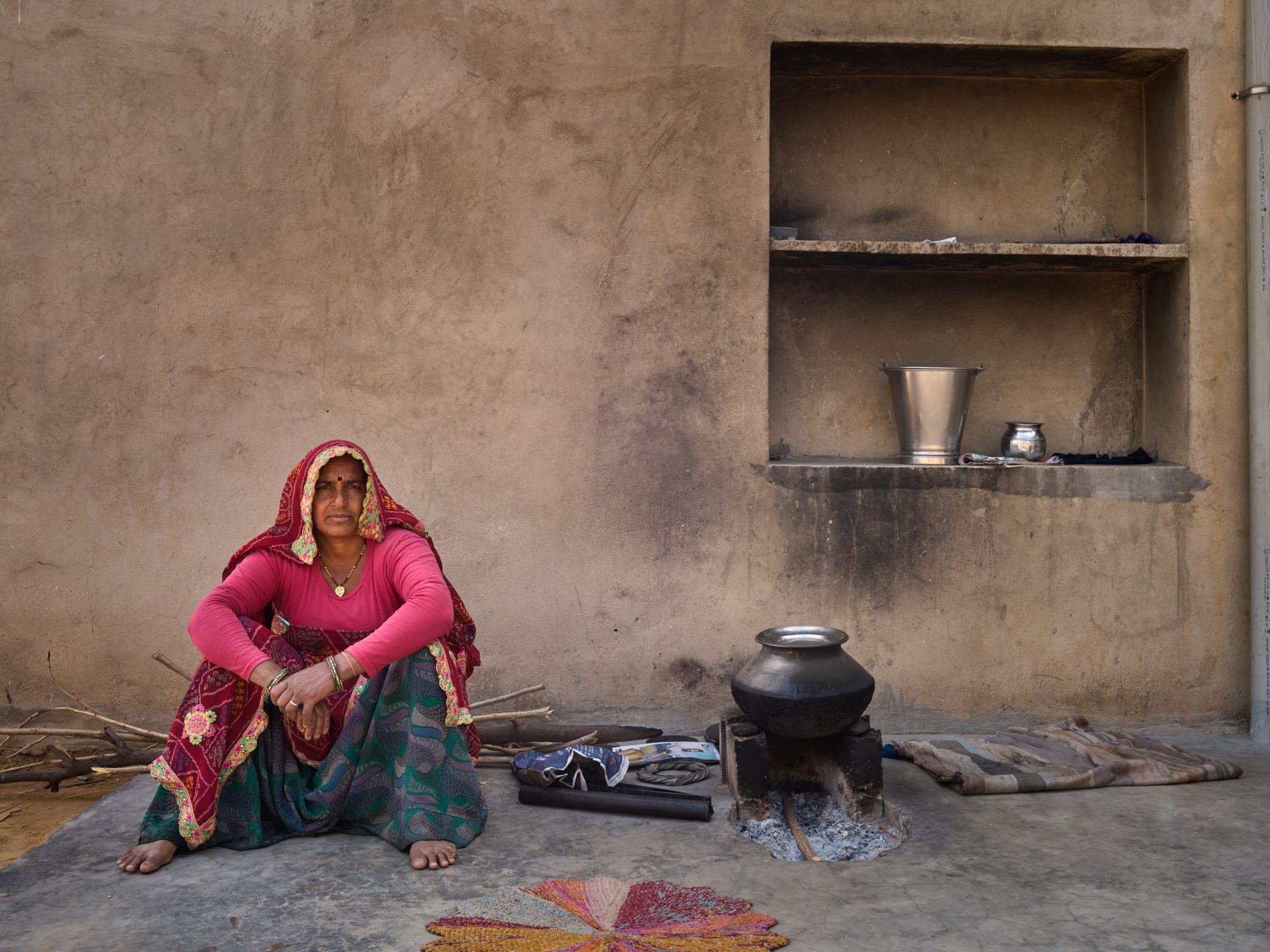
The Naandi Foundation
Urban Farms Co. is an initiative of the Naandi Foundation, set up 25 years ago by Manoj Kumar. It has grown to become perhaps the largest multi-sectoral, non-profit organization in India. Focused on tackling poverty by means of initiatives to strengthen girls, women and farmers, in those 25 years Naandi has influenced more than eight million lives.
Manoj led the transformation of more than 2,000 villages in the tribal region of Araku Valley in the Eastern Ghats, combatting poverty, the Naxal rebellion and ecological fragility.
Those efforts, over more than twenty years, resulted in the setting up of ARAKU Coffee, an organically grown and certified specialty coffee of exceptional quality that has freed 300,000 tribal lives from poverty and put India on the world map of outstanding coffee.
For Resilience Food Stories we travelled for a month through the Araku Valley with writer Dirk van Weelden, to create a story about the work of the Naandi Foundation. It is an in-depth story, showing all the aspects of what makes the Araku story so valuable and special (food and agriculture, and the economic, social and spiritual aspects). All of these things together, because they belong together.
We will be publishing that story later this year.
Sources
FAO, Food and Agriculture Organization of the United Nations
LNV, Dutch Ministry of Agriculture, Nature and Food Quality
WUR, Wageningen University & Research
Naandi Foundation
The regenerative farming framework – Arakunomics, named after the Araku region – has been extended into rural and urban India. In 2020 it won the World Food Vision Prize, launched by the Rockefeller Foundation in New York.
We have selected two more stories that might inspire you.
